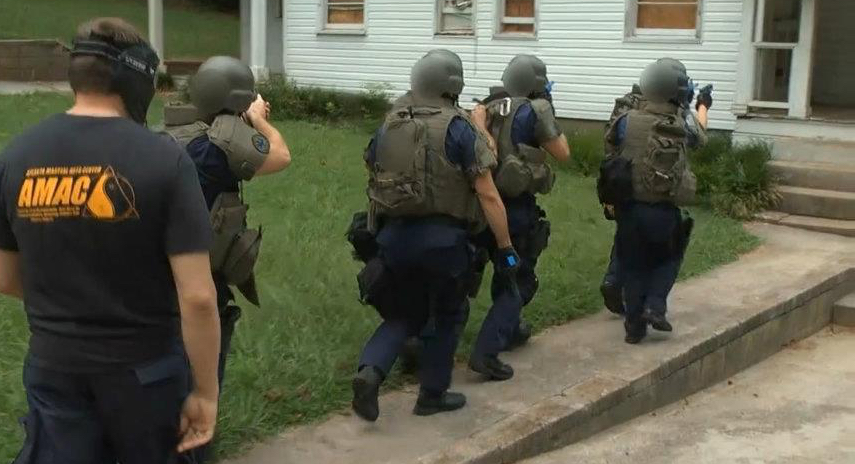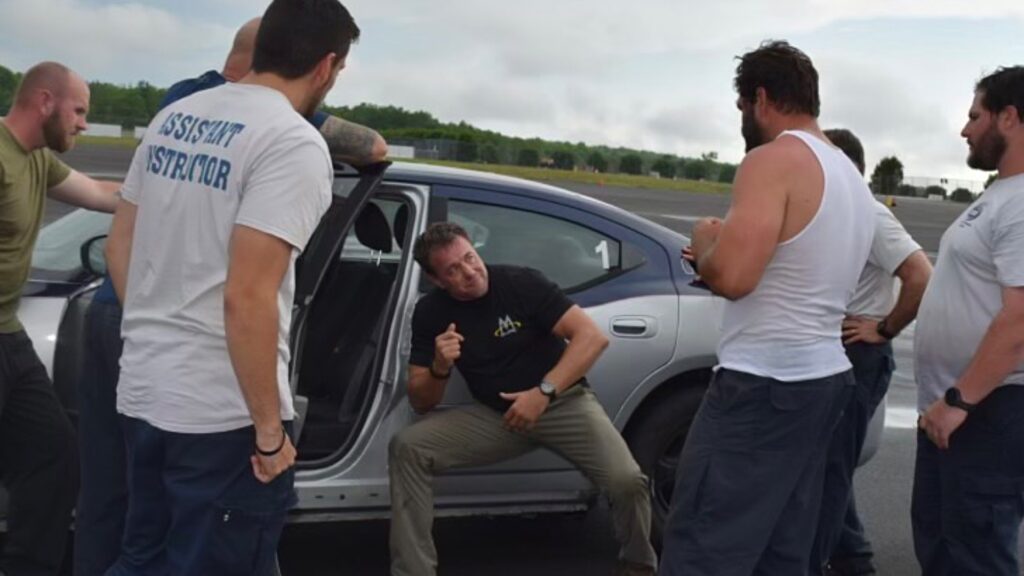In the ever-evolving landscape of law enforcement, the concept of defensive tactics has significantly transformed. While some argue that little has changed over the past five decades, a deeper examination reveals that defensive tactics have indeed undergone a substantial shift to meet the demands of modern policing. This article aims to dispel the notion that defensive tactics have remained stagnant and shed light on the dynamic changes that have occurred, shaping the training and strategies utilized by law enforcement officers today.

Challenging The Status Quo
An article recently caught my attention, highlighting a perspective that defensive tactics within law enforcement have remained largely unchanged. While I respect differing viewpoints, it is imperative to recognize the evolution that has taken place in this field. The assertion that little progress has been made fails to consider the advancements in training, techniques, and strategies that have emerged to address the complex and ever-changing nature of law enforcement challenges.
It is true that not all approaches to defensive tactics within law enforcement have been effective. Some programs have regrettably borrowed elements from traditional martial arts, attempting to retrofit them into the law enforcement context without due consideration for the unique demands of the profession. This approach is both ineffective and potentially dangerous, as it fails to account for the distinct environment and circumstances law enforcement officers face on a daily basis.
Customization for Success
Creating effective defensive tactics for law enforcement requires a comprehensive understanding of the profession’s specific demands. Far from adopting a one-size-fits-all approach, successful defensive tactics programs tailor their content to the unique needs of law enforcement officers. This entails taking into account factors such as available training time, physical fitness levels, age diversity, and the seamless integration of empty-hand techniques and tools. The ability to adapt and customize training based on the individual or group in front of the instructor is paramount to success.
A critical aspect often overlooked is the seamless transition between empty-hand techniques and the use of tools in law enforcement defensive tactics. This transition space, aptly referred to as “bridging the gap,” is a pivotal area where officers require specialized training. Without proper training in this area, officers may struggle to transition between empty-hand techniques and tools, potentially leading to ineffective or excessive use of force. Confidence in the use of lower-level force options is essential to prevent officers from resorting to higher-level force prematurely.
The Role of Instructors as Program Creators
Creating effective and modern defensive tactics programs requires more than just teaching; it necessitates an approach that combines education with program creation. Instructors must possess a deep understanding of law enforcement’s challenges, coupled with the ability to craft cohesive and adaptive training programs. The creation process should involve intelligent methodology, utilizing evidence-based techniques and strategies that align with the demands of contemporary policing.
The assertion that defensive tactics in law enforcement have remained static over the past five decades overlooks the dynamic evolution that has occurred. Defensive tactics have not only evolved but have been tailored to meet the demands of modern law enforcement challenges. It is crucial to recognize that practical training goes beyond traditional martial arts and requires a thoughtful, adaptive, and comprehensive approach that takes into account the unique environment, culture, and requirements of law enforcement.

As the law enforcement landscape continues to change, so too must the strategies and techniques that officers rely upon. It is our responsibility to ensure that the men and women who serve and protect our communities are equipped with the most effective, modern, and adaptable defensive tactics possible.
Over the course of the last decade, the landscape of law enforcement training has witnessed a significant influence from mixed martial arts (MMA) and ultimate street fighting. This influence has prompted some police trainers to delve into the realm of ground fighting and grappling techniques. While these skills have the potential to enhance an officer’s effectiveness, they also introduce a set of challenges that demand a substantial investment of time, dedication, and practical application.
Incorporating ground fighting and grappling techniques into law enforcement defensive tactics is complex. These skills require training beyond the basics, necessitating extensive practice, repetition, and real-world application for officers to master them truly. Unfortunately, despite the growing interest and recognition of the value of grappling in policing, there is no universally mandated grappling-related training at most police academies.
In recent years, some law enforcement agencies have recognized the benefits of integrating grappling arts into their training programs. This recognition signals a positive shift toward a more comprehensive and versatile approach to defensive tactics. However, the implementation of such training is a journey that requires careful consideration.
The discourse around incorporating jiu-jitsu or other martial arts into law enforcement training has highlighted an essential aspect – the timeline for mastery. Many practitioners acknowledge that achieving mastery in these disciplines can take a considerable amount of time, often spanning a decade or more. The progression through various belt ranks is symbolic of this journey, each representing a distinct skill and expertise level.
Yet, it’s important to recognize that the mastery of martial arts as applied in traditional academy settings may not directly translate to the demands of law enforcement scenarios. Embracing training that has primarily taken place within the confines of a martial arts studio without direct application in the law enforcement context can carry inherent risks. The transition from the academy to the streets requires a fine understanding of how techniques and strategies need to be adapted to real-world situations.
One crucial aspect to consider is the amount of time dedicated to gym training within police training programs. Currently, the emphasis on gym time is minimal in many law enforcement academies. This raises questions about the feasibility of fully integrating grappling arts into the curriculum and ensuring that officers have the opportunity to develop practical skills that align with their duties.

The convergence of MMA and Jiu-Jitsu with law enforcement defensive tactics has sparked a movement toward incorporating ground fighting and grappling techniques. While these techniques hold promise, their successful integration requires a significant investment of time, training, and adaptation. The journey toward mastery of martial arts, while commendable, must be carefully balanced with the practical demands of law enforcement scenarios. As agencies explore the potential of grappling arts, the allocation of sufficient gym time and training resources becomes a crucial consideration in equipping officers with the skills they need to navigate the challenges of modern policing effectively.
Another layer to the discussion surrounding the integration of Brazilian jiu-jitsu (BJJ) into law enforcement defensive tactics involves a critical consideration that often goes overlooked. BJJ, while a highly effective martial art in its own right, was not originally developed with the specific constraints and requirements of law enforcement gear in mind. This raises a crucial point of departure from the conventional BJJ practice – the inclusion of law enforcement equipment, including the essential firearm.
Incorporating the element of law enforcement gear into the grappling equation introduces a series of challenges that demand a reevaluation of the fundamental mechanics of the system. From my own firsthand experience in introducing police equipment into grappling scenarios, I’ve witnessed a profound need for modifications that transcend superficial adjustments. The effectiveness of techniques in the presence of firearms necessitates a more profound restructuring of the BJJ framework.
What becomes evident is that when the firearm is added to the equation, the dynamics of the system shift dramatically. The interplay between the practitioner’s movements, the gear, and the firearm introduces multiple layers of complexity that must be accounted for. In essence, the introduction of the firearm transforms the grappling techniques, leading them to evolve into what may even resemble an entirely distinct system altogether.
Addressing the integration of firearms and law enforcement gear into the realm of BJJ is a dimension that, regrettably, often remains unexplored within the community. While the effectiveness of BJJ in unarmed combat scenarios is well-established, the transition to grappling within the context of law enforcement responsibilities carries unique demands that require innovative solutions.
Several critical considerations emerge when contemplating the seamless integration of firearms and BJJ techniques. The positioning of the firearm and its implications on body movement and mobility, the adaptability of holds and submissions while maintaining weapon retention, and the need to ensure officer safety without compromising their ability to execute effective techniques – these are all factors that demand thoughtful attention.
The conventional practice of BJJ, while immensely valuable, must be reevaluated when introduced into the context of law enforcement operations. The very inclusion of firearms and police gear reshapes the mechanics of the system, prompting a necessity for modifications that transcend mere superficial adjustments. As practitioners, instructors, and law enforcement agencies consider the potential integration of BJJ into their defensive tactics, it’s paramount that the complexities of grappling with firearms be addressed and innovatively incorporated.

Alan Baker specializes in designing customized Defensive Tactics Programs tailored to the specific needs of law enforcement agencies, security firms, and military organizations. With a focus on practical techniques, scenario-based training, and adaptability to real-world situations, Alan can develop comprehensive training programs that enhance the skills and preparedness of personnel. If you are interested in connecting with Alan or booking his services, please visit our website at https://bakertacticaldesign.com or reach out to him directly through LinkedIn. Elevate your organization’s defensive capabilities with Alan Baker’s expertise and experience.

